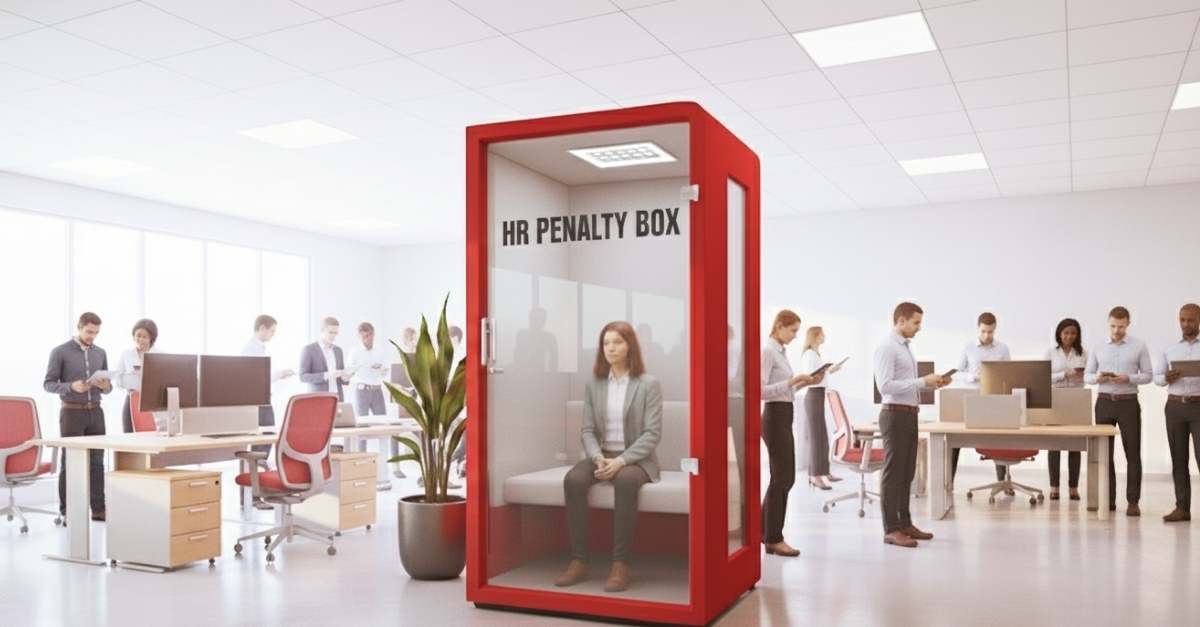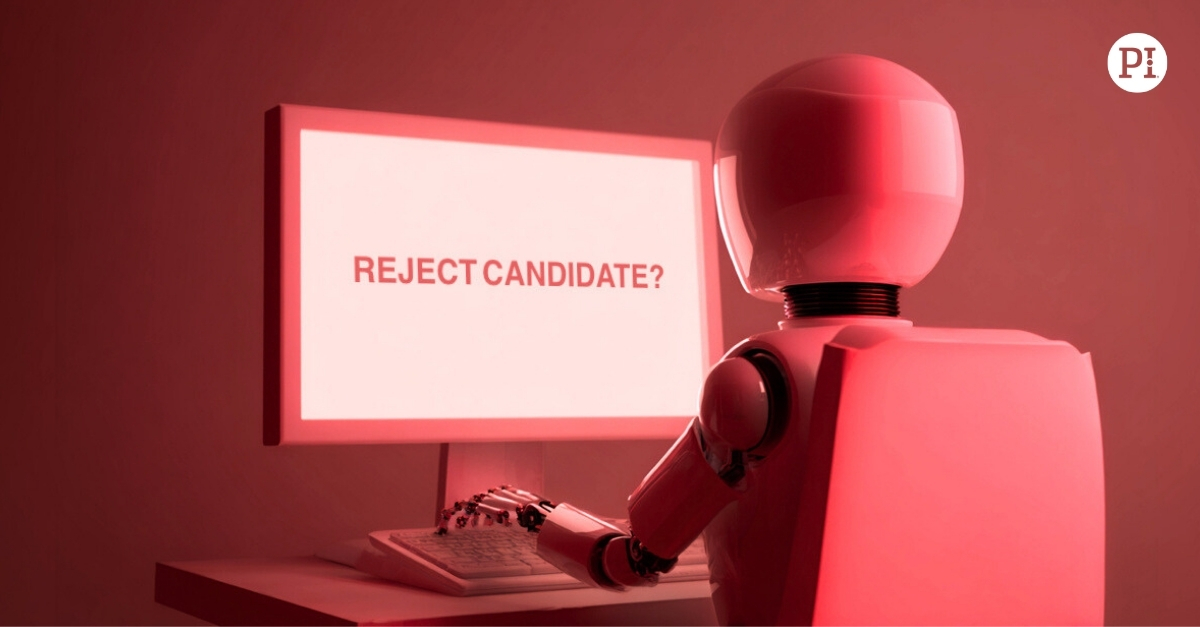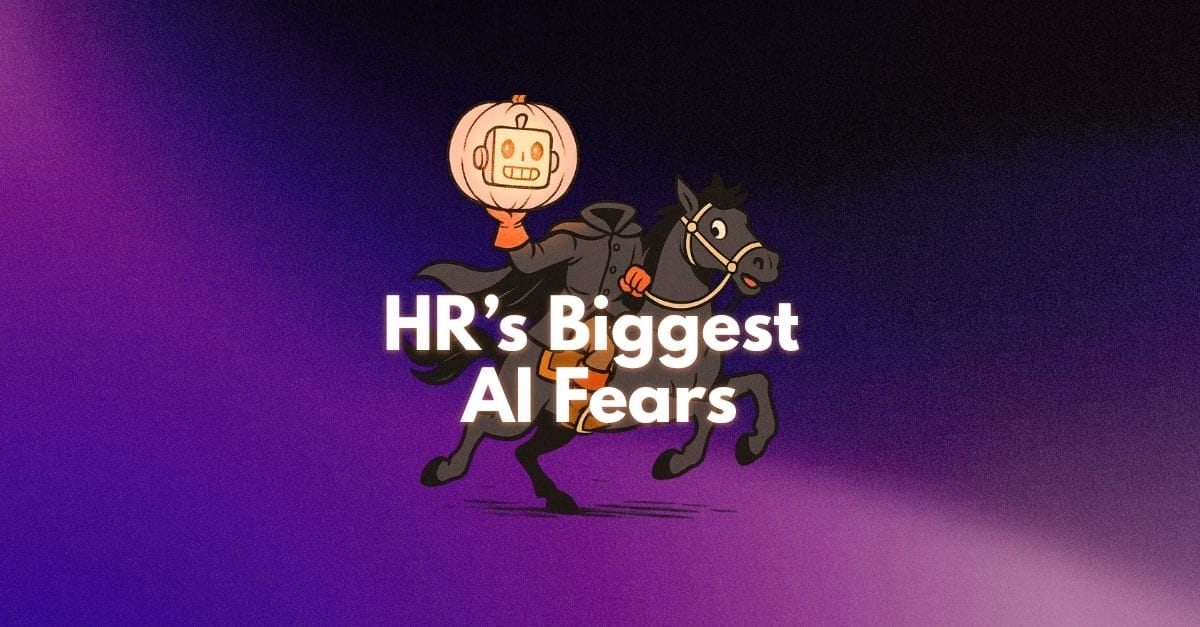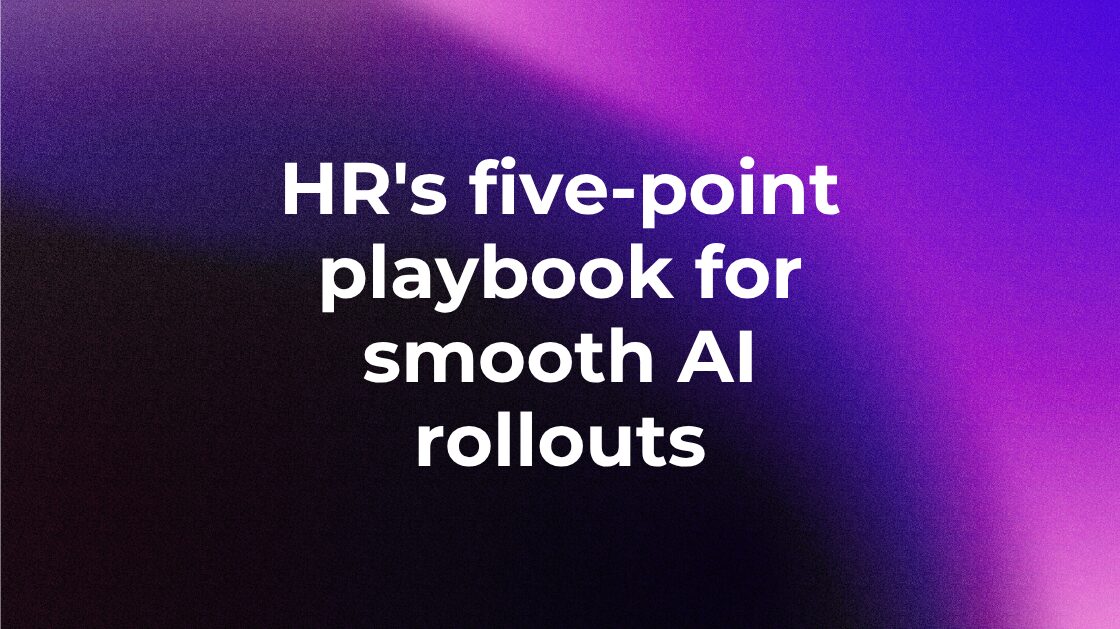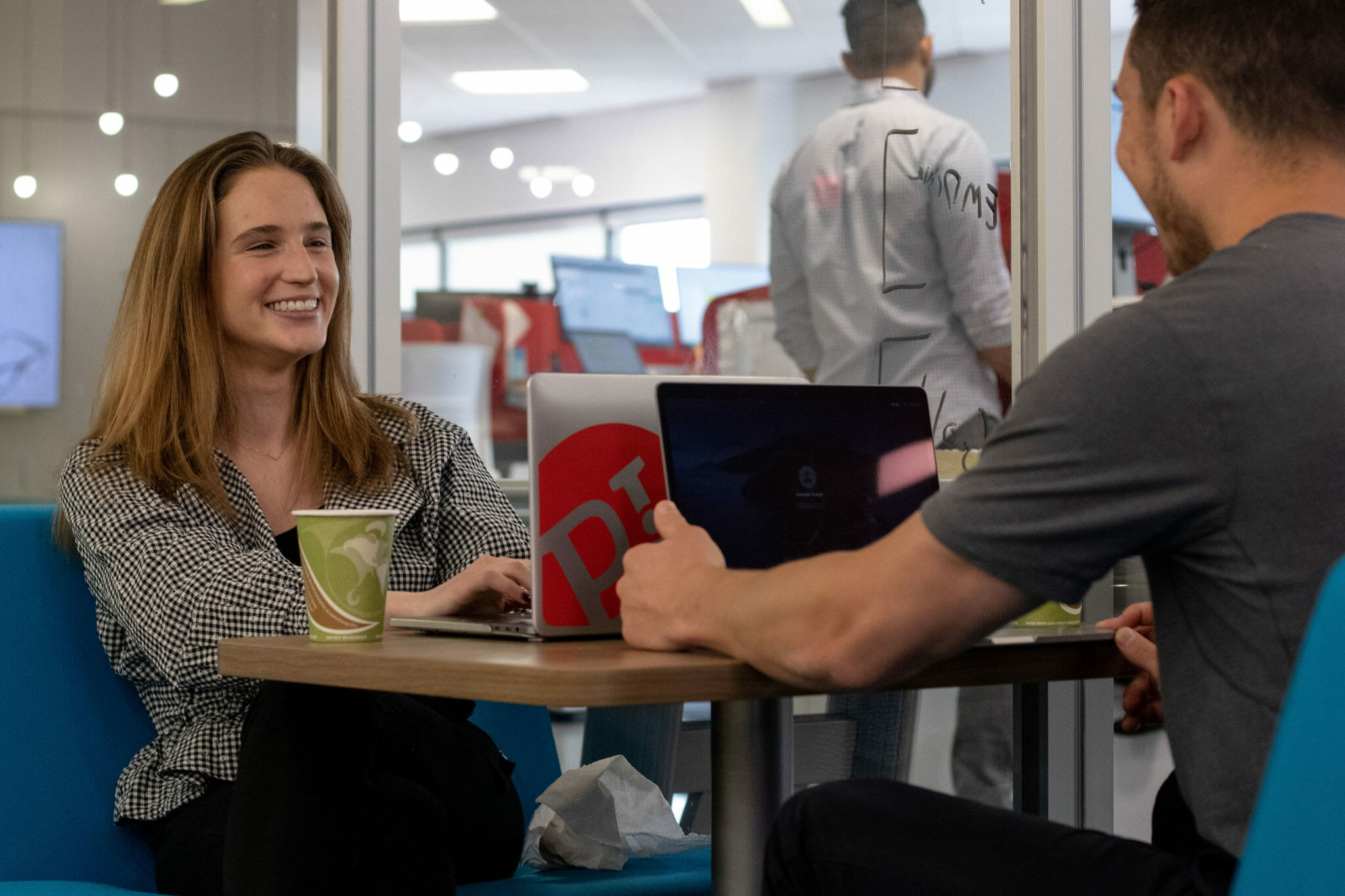Most headlines about AI and work focus on one question: Will robots take our jobs? But when we asked 1,000 U.S. professionals how they actually feel about AI, the results surprised us.
Eighty-one percent said they feel positive about AI’s role in their careers. Nearly two-thirds aren’t worried about being replaced. And when asked what would make them feel more secure as their companies adopt AI, the top answer wasn’t job guarantees or promotions. It was training.
This tells us something important. Workers aren’t all panicking about AI. They’re preparing for it. They see it as a tool that can make them more effective, not a threat that will make them obsolete. But there’s a gap between feeling optimistic and feeling confident. And closing that gap comes down to one thing: whether companies are willing to invest in the people who will actually use these tools.
This is HR’s moment. Employees want transparent communication and real skill development — and our 2025 AI at Work survey reveals exactly where that matters most. The findings show what employees need to move from cautious optimism to genuine confidence, and why training has become the foundation of trust during technological change.

This is HR’s moment to emphasize people strategy.
Check out our latest eBook – HR’s playbook for the AI era – and help ensure the human impact of AI rollout isn’t overlooked.
More workers see AI as a career ally, not a threat.
The fear narrative around AI doesn’t match what workers are actually experiencing. When we asked how AI might affect their careers, 81% said they feel somewhat to very positive about it. Sixty-two percent aren’t concerned about being replaced.
Even more telling, 67% believe AI can strengthen company culture, while only 14% think it could weaken it. That’s not the response you’d expect from a workforce bracing for obsolescence.
What we’re seeing is a turning point where employees view AI as something that can make their work better. They’re thinking about how to grow alongside these tools rather than whether they’ll survive them.
But this optimism comes with conditions. Sixty percent said they’d prefer their company adopt AI cautiously and gradually rather than rushing into it. Workers are open to change, but they want time to adjust. They want to understand what’s coming and how it will affect their day-to-day work.
So if employees are optimistic, what’s holding them back from full confidence? The answer lies in who they trust and what they’re asking for.
When openness doesn’t equal influence
Seventy-one percent of employees report feeling comfortable raising questions and ideas about AI at work. That sounds like good news. Companies have created space for people to speak up.
But here’s where it gets complicated. Forty-three percent say their input doesn’t actually shape how AI gets adopted.
This can create a “tell us what you think” culture without follow-through. Employees are invited to share their concerns, only to watch as decisions are made without their input. Organizations get credit for listening without having to act on what they hear. It lets leadership appear open while maintaining full control. But employees see through it. And when people realize their feedback is decorative rather than functional, they stop offering it.
HR has a chance to change this dynamic. Instead of just collecting feedback for show, HR can close the loop by explaining how engagement data or employee input shaped company decisions – or why certain suggestions couldn’t be implemented. That kind of transparency turns listening into dialogue, and dialogue is what builds trust during change.
The trust problem shows up in another finding. When asked who they trust most to explain AI’s impact on their jobs, employees ranked peers and HR above executives, managers and outside experts. The traditional chain of command has flipped.
Why? In many cases, executives have stayed quiet or led messy rollouts and mandates about AI, leaving employees to fill in the blanks. Or when leaders do speak up, the messaging feels scripted and corporate rather than honest. Meanwhile, workers are dealing with tight job markets, layoffs and job postings that turn out to be fake. Trust was already strained before AI entered the picture.
Sixty-seven percent say their employer shares enough information about AI. But being informed isn’t the same as being included. Employees can read all the memos they want. If they don’t have a voice in what happens next, the information doesn’t build confidence.
That doesn’t mean leaders need to act on every piece of feedback. But it does mean employees need to feel heard. When workers share concerns or ideas, they want to know someone listened and considered what they said, even if the final decision goes a different direction. The problem isn’t that leaders can’t always say yes. It’s that too often, employees don’t know if anyone was even listening.
When employees don’t feel heard, they disengage. When they don’t trust leadership, they tune out. And when AI rolls out without their buy-in, adoption stalls.
So what do employees actually want? The answer is clearer than you might think.

What employees really want during AI adoption
When it comes to their companies adopting AI, employees want training. Not job guarantees. Not promotions. Training. Here’s the full breakdown of what all employees said they need:
- 68% want more training opportunities
- 61% want clear communication from leadership
- 58% want job reassurance
- 44% want a defined career growth path
- 40% want involvement in AI decision-making
- 29% want mentorship or coaching
The margin wasn’t close. Training led by a significant gap, and that tells us something about how employees are thinking about their futures.
Employees aren’t asking for empty promises. Job security ranked lower than training because workers understand that guarantees don’t mean much if you lack the skills to stay relevant. They’d rather be equipped than reassured. Valuable, not just employed.
Beyond the practical benefits, training is also a sign of respect. It shows employees they’re worth developing, not just replacing. When a company invests in training, it’s saying “we’re building this future with you, not around you.” Employees see that investment as proof they’re part of the long-term plan. In other words, upskilling has become the new currency of trust.
Of course, training can’t be one-size-fits-all. Some employees are natural experimenters who want early access to AI tools and the freedom to figure them out. Others need clear processes, step-by-step guidance and time to adapt. Understanding these behavioral differences is how you design training that actually works. If you treat everyone the same, you’ll lose the people who need structure and frustrate the ones who want autonomy.
But here’s where it gets tricky. While employees want HR to lead on AI, there is some doubt around HR’s ability to manage adoption.
Why some employees doubt HR can handle AI adoption
Seventy percent of employees have reservations about HR’s ability to manage AI effectively. That’s a problem, because HR is the department employees trust most to explain what’s happening.
So HR finds itself in an uncomfortable position. Workers would rather hear from HR than from executives or outside experts. But they’re not convinced HR has the authority or the tools to manage AI adoption the right way.
Why the doubt? HR has spent the last few years delivering bad news. Layoffs, benefit cuts, tightened policies. In many organizations, HR became the messenger for decisions made above their pay grade. Employees started seeing HR as the enforcement arm of corporate strategy rather than an advocate for workers.
That history matters now. When HR steps up to lead on AI, employees wonder whether the department is acting in their interest or just carrying out orders from the top.
The opportunity here is real. HR can rebuild credibility by focusing on exactly what employees say they need: transparent leadership and skill development. This isn’t about adding more responsibilities to an already overworked function. HR needs to redefine what it does well – and the perception of its role. Less time managing compliance, more time helping people grow. Less time delivering corporate messaging, more time advocating for workers. It requires a shift from policy enforcer to people advocate.
If HR can make that shift, it won’t just help with AI adoption. It will restore trust that’s been eroding for years.
From optimism to confidence
Workers are ready for AI. They see the potential. They’re willing to adapt. What they need now is for leaders to meet them where they are.
That means investing in training, but also behavioral data that accounts for how different people learn and adjust to change. It means communicating openly about what’s coming rather than staying silent until decisions are already made. And it means involving employees in the process instead of treating adoption as something that happens to them.
Organizations that take this approach will roll out AI more smoothly, but more importantly, they’ll build stronger, more engaged teams in the process. When employees feel equipped and included, they don’t resist change; they help drive it.
Ready to build a workforce that’s prepared for AI? Learn how PI helps organizations understand their people and develop leaders who turn change into opportunity.

